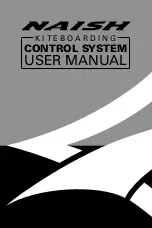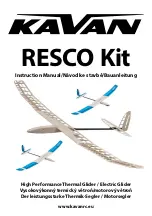
APAX evo user manual
________________________________________________________________________________________________________________________________________________________
●
Check one last time that there are no knots in the lines, nothing is twisted and that
the lines are not caught in vegetation or rocks. You must be particularly attentive in
lighter winds.
WARNING: If there are obvious creases in the glider as a result of tight packing or long
term storage, carry out some practice inflations before your first launch and smooth out
the trailing edge a little. This ensures that the flow profile is correct during launch. This is
particularly important in low temperatures.
Start check
The start check is carried out immediately before launch to check the most important safety
points once again. It should always be carried out in the same sequence so that nothing is
overlooked. The points are:
1.
Is your personal equipment in order (engine, harness, carabiners, reserve, helmet)
and are all straps done up?
2.
Is the canopy arranged in a half-moon shape and are all the air intakes open?
3.
Are all the lines untangled and are any lines under the canopy?
4.
Are the trimmer positions correct and symmerical?
5.
Does the weather, in particular wind direction and strength, allow a safe flight?
6.
Is the propeller free?
7.
Does the engine deliver full power?
8.
Are the airspace and launch area clear?
General warnings and advice
Before flying, check the following:
●
Are you in good physical and mental condition?
●
Are you familiar and compliant with all applicable laws and regulations in your area?
●
Are you within the certified weight range?
●
Do you have the necessary insurance cover?
●
Are you briefed thoroughly about the site, airspace and expected weather conditions
of the day?
●
Is your equipment and choice of site suitable for your level of experience?
●
Do you have a suitable helmet, gloves, boots, eyewear and adequate clothing?
●
Are you carrying some form of identification, in case of an accident? Take along a
radio and mobile phone if possible.
●
Do you fully understand how to safely fly your new wing? If not, have your instructor
or dealer explain anything you are not sure about.
Page 15
Summary of Contents for APAX evo
Page 1: ...User manual Version 1 0 Date August 2020...
Page 52: ......














































